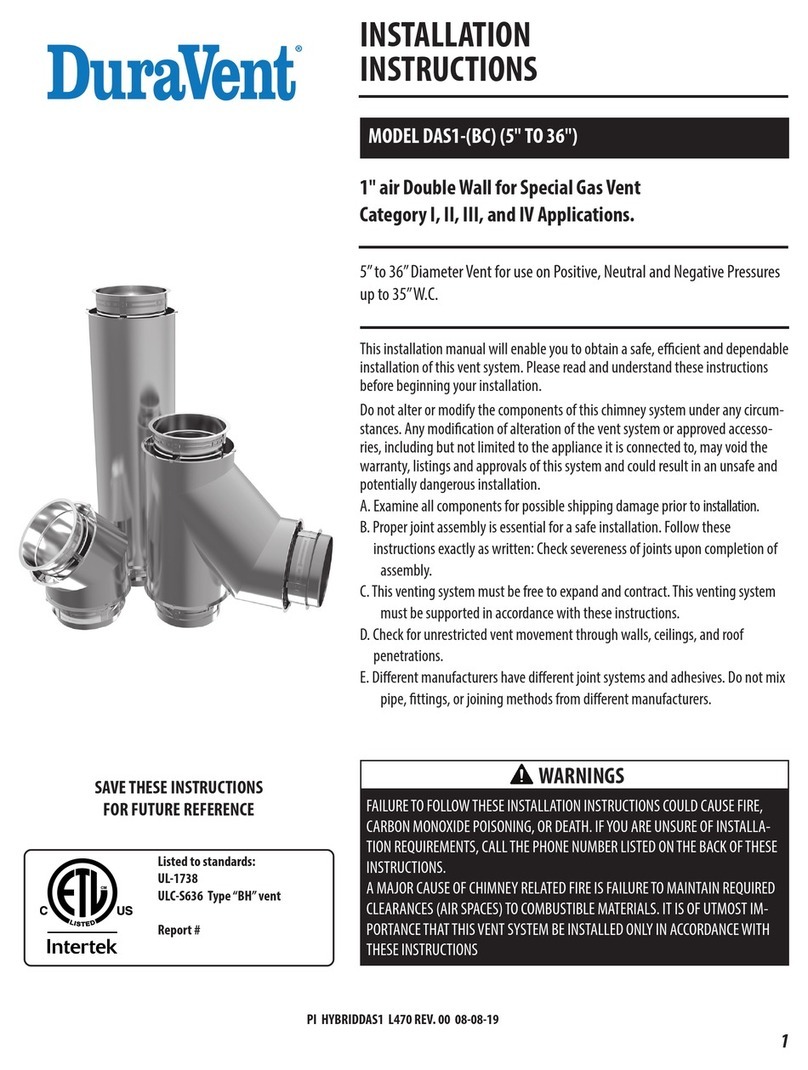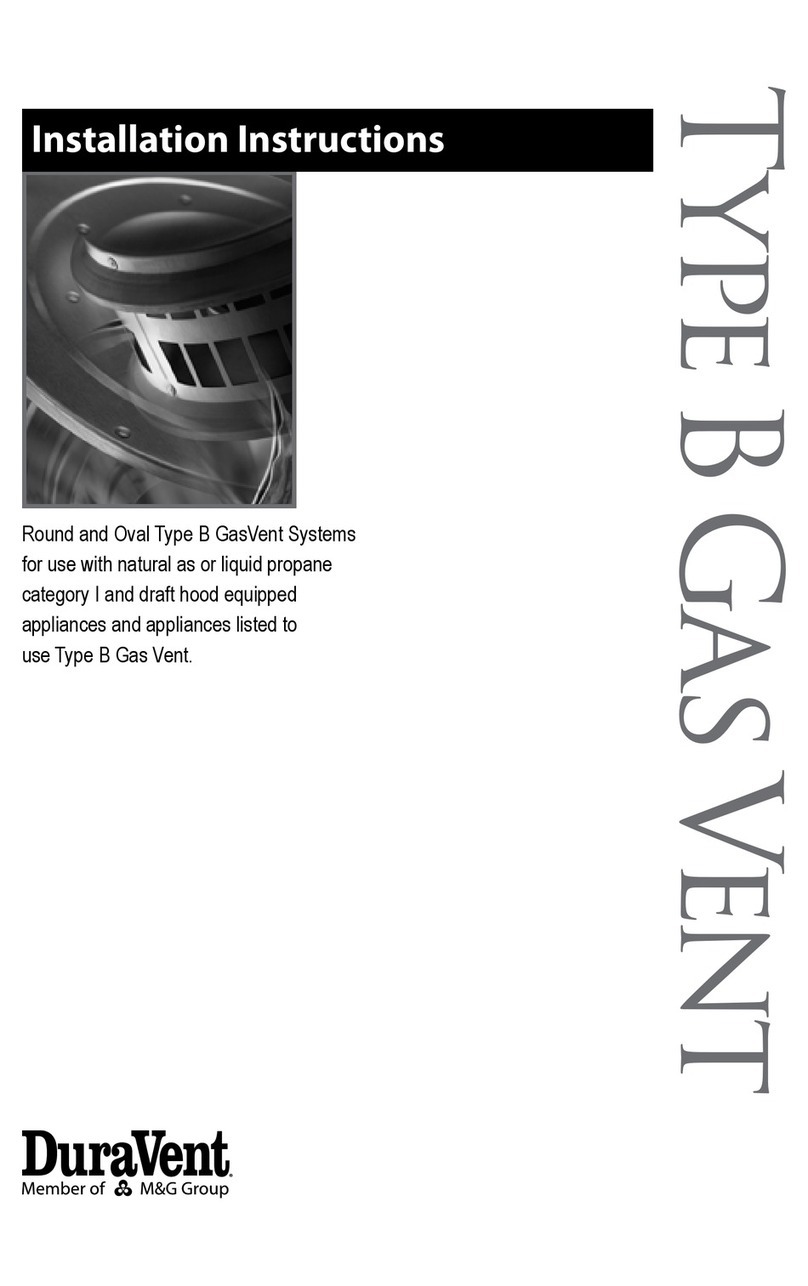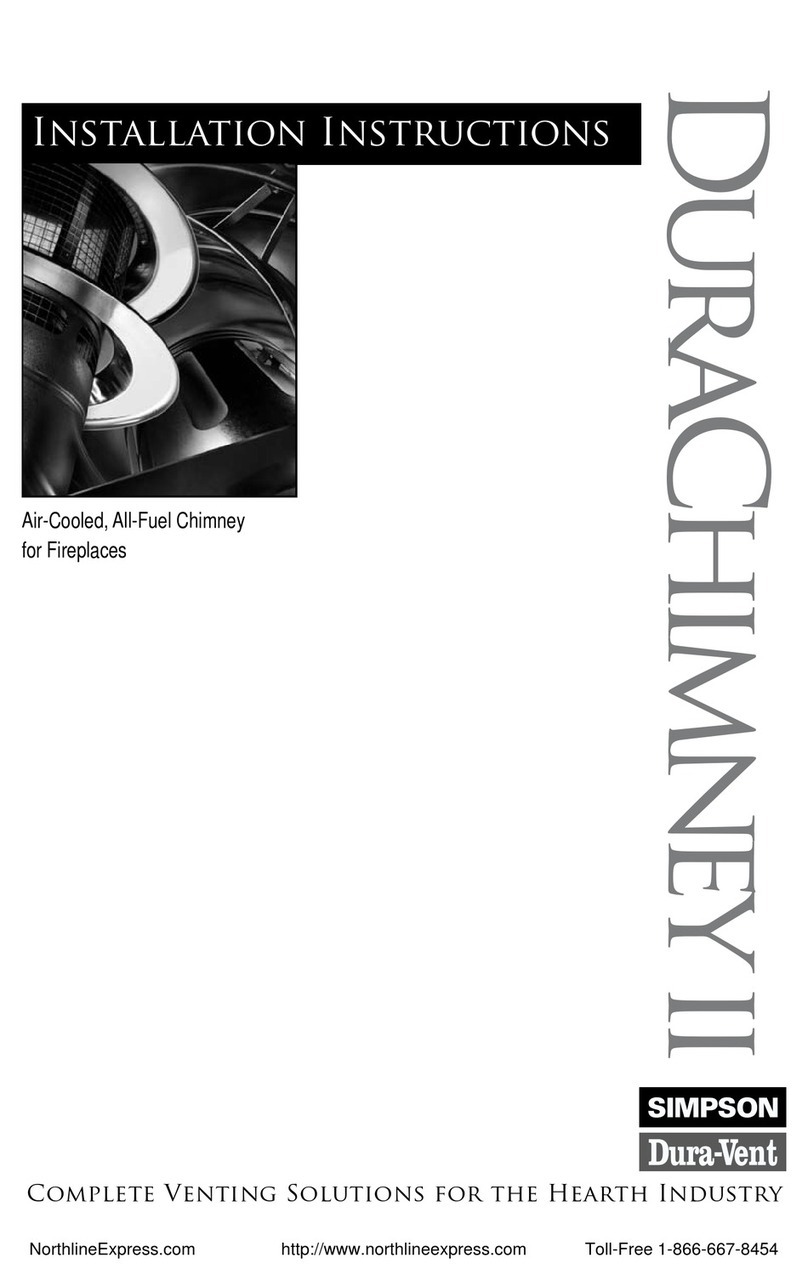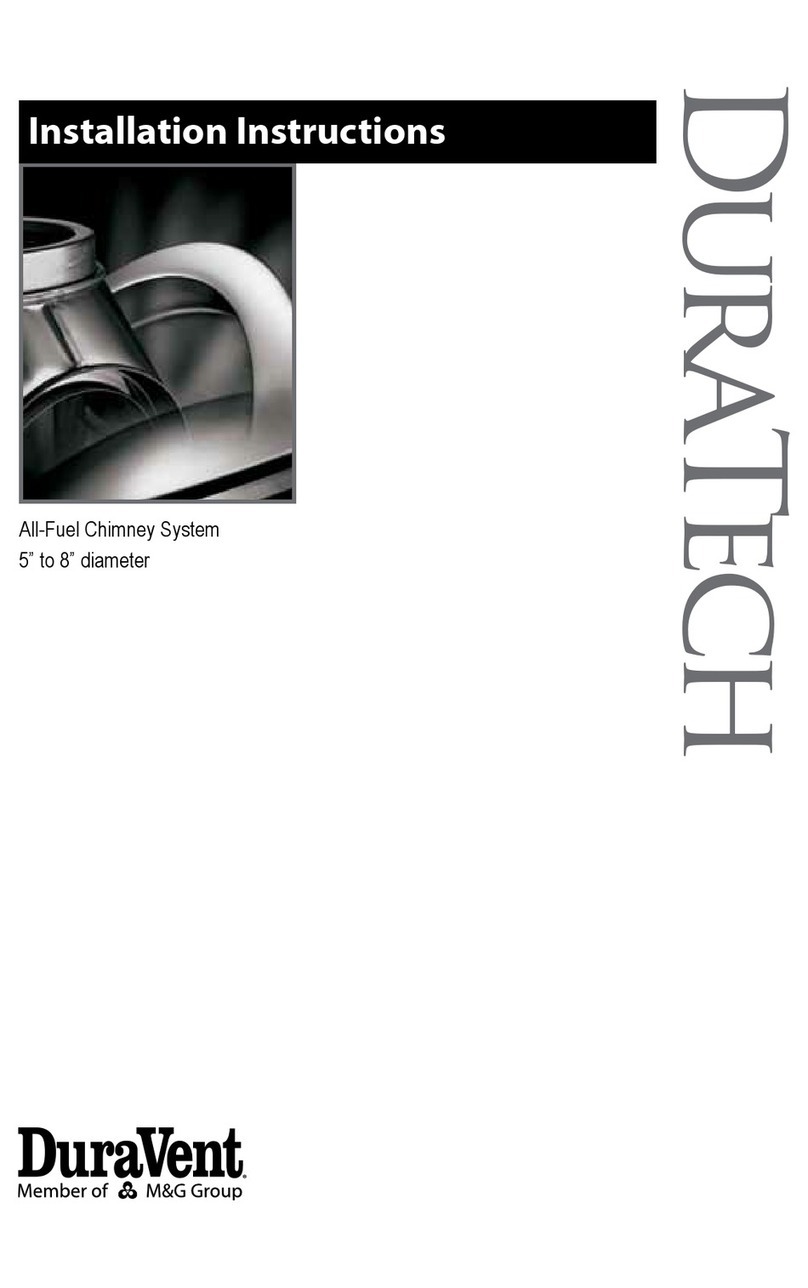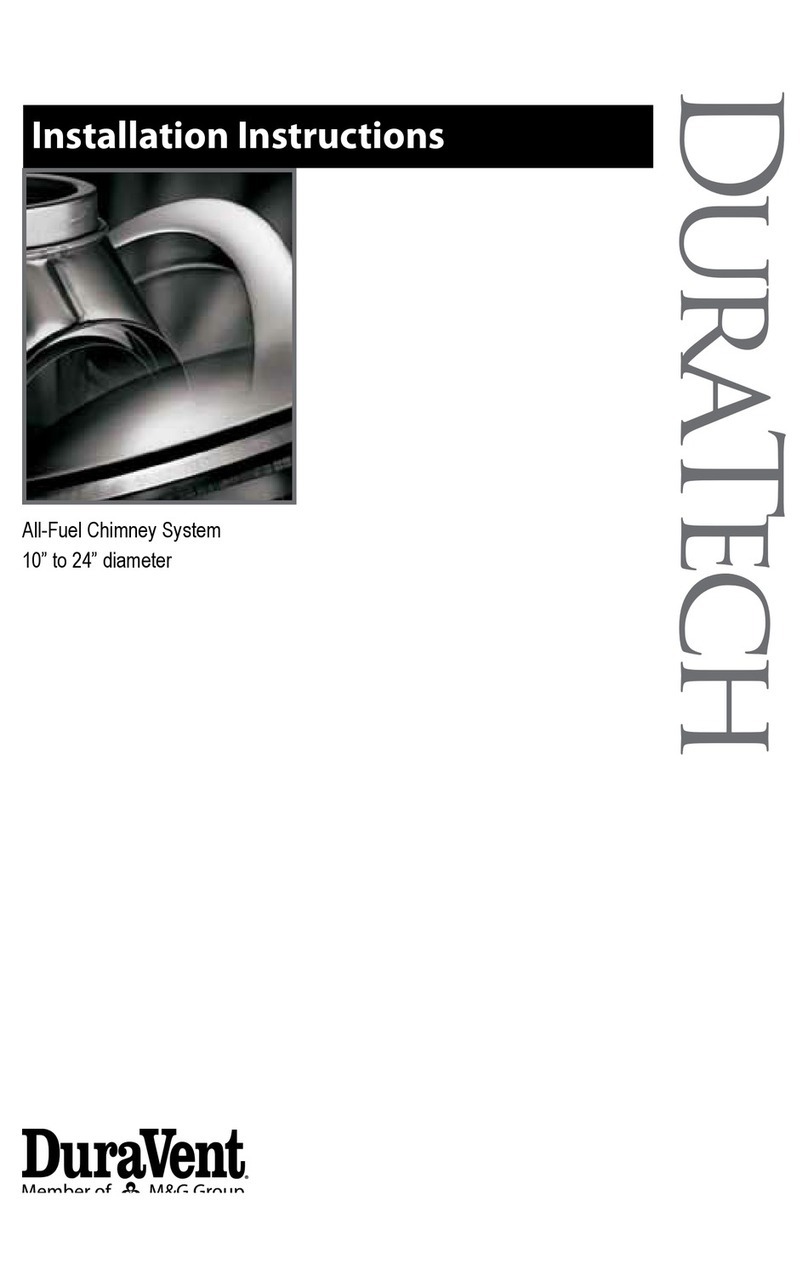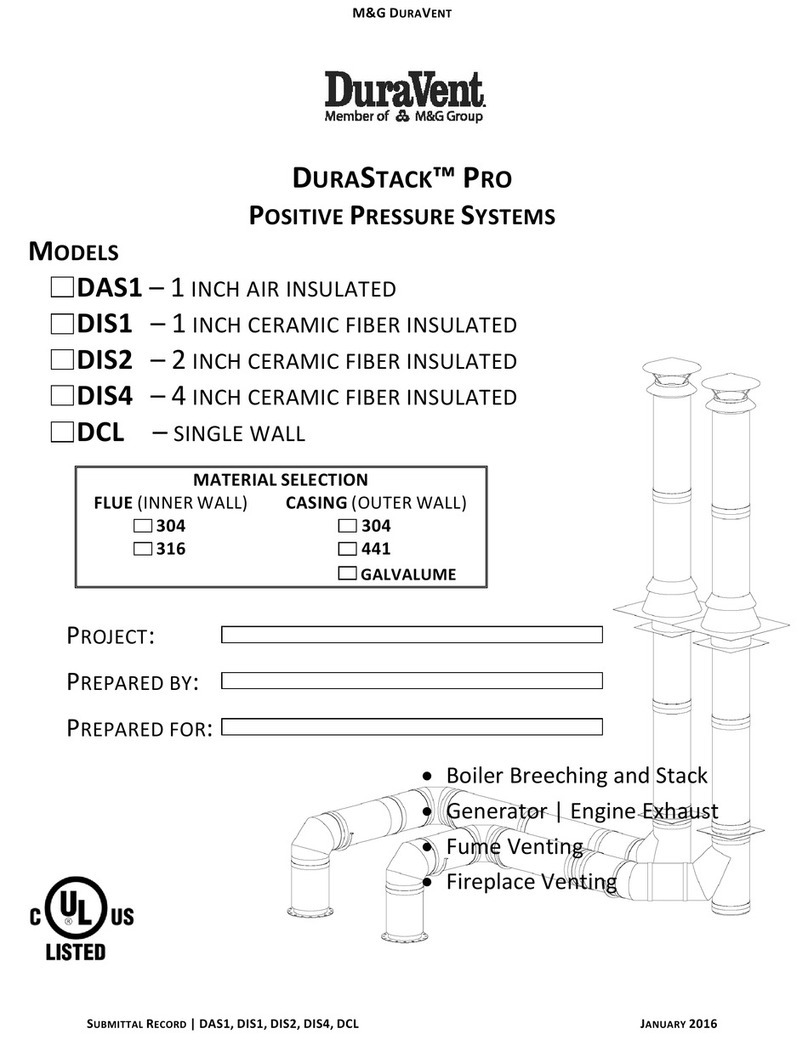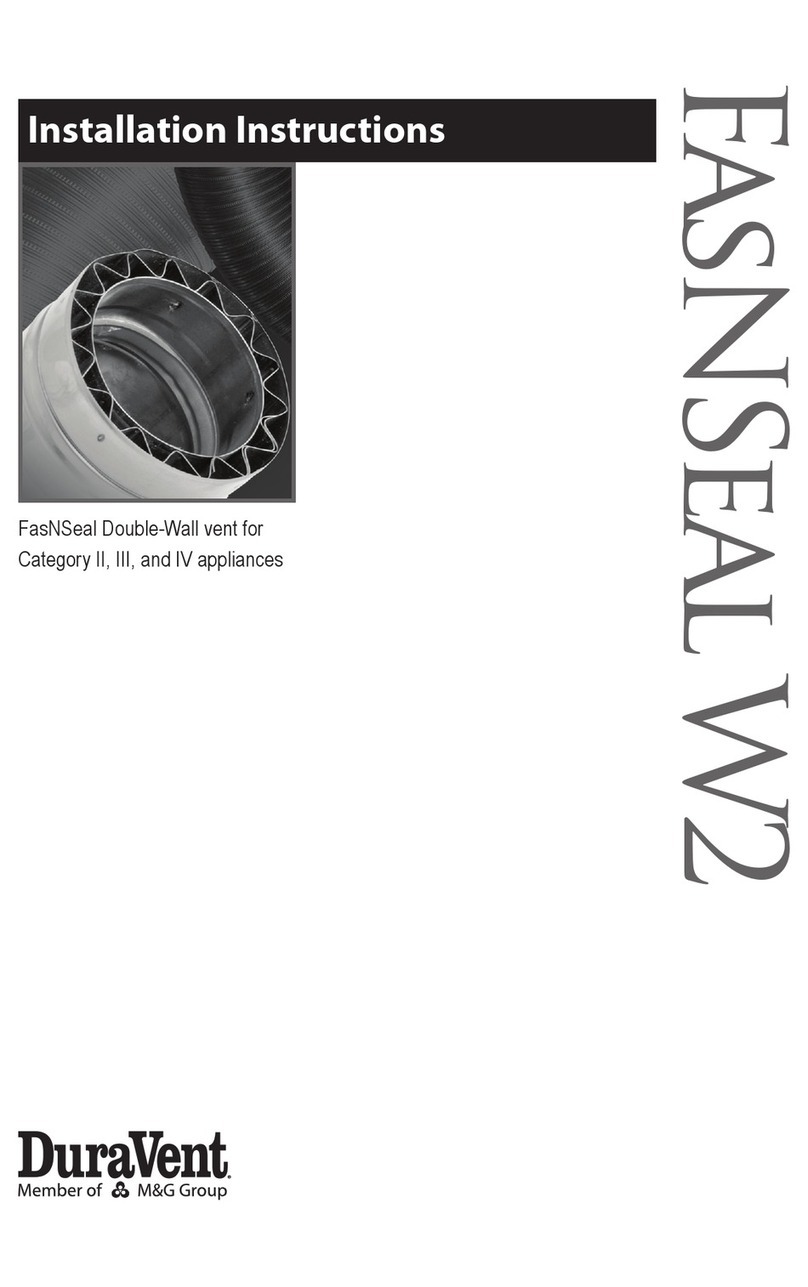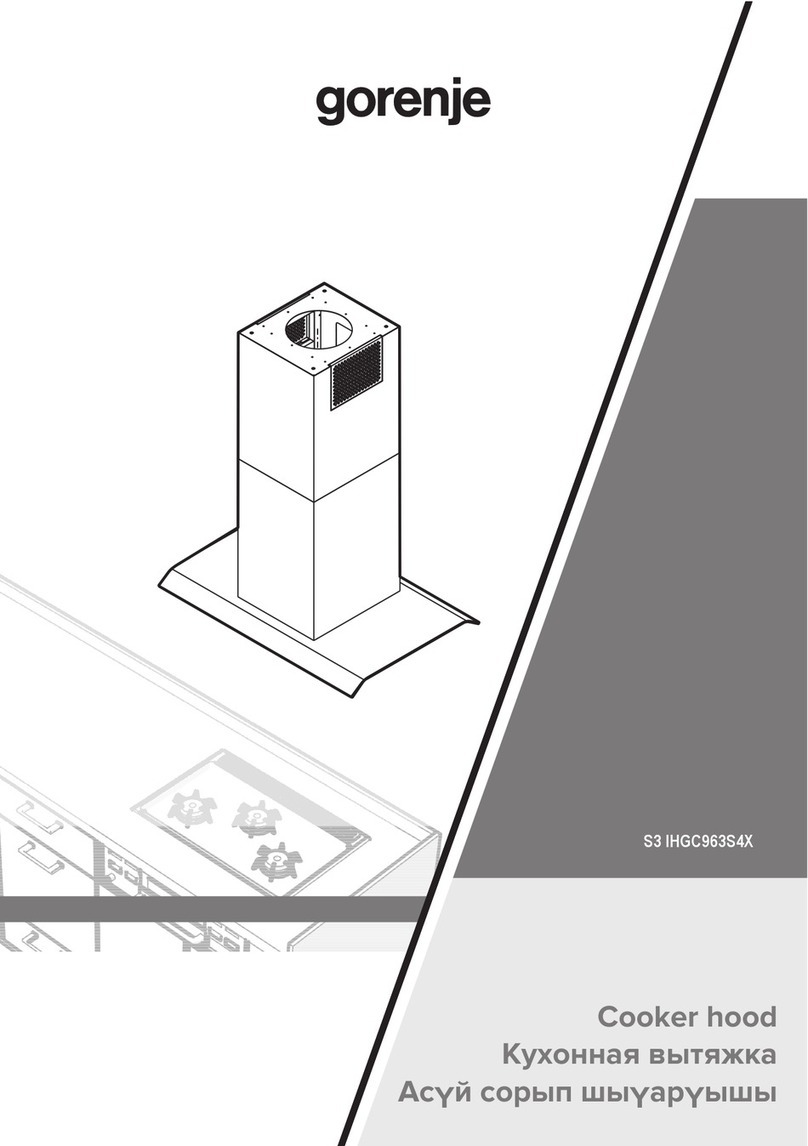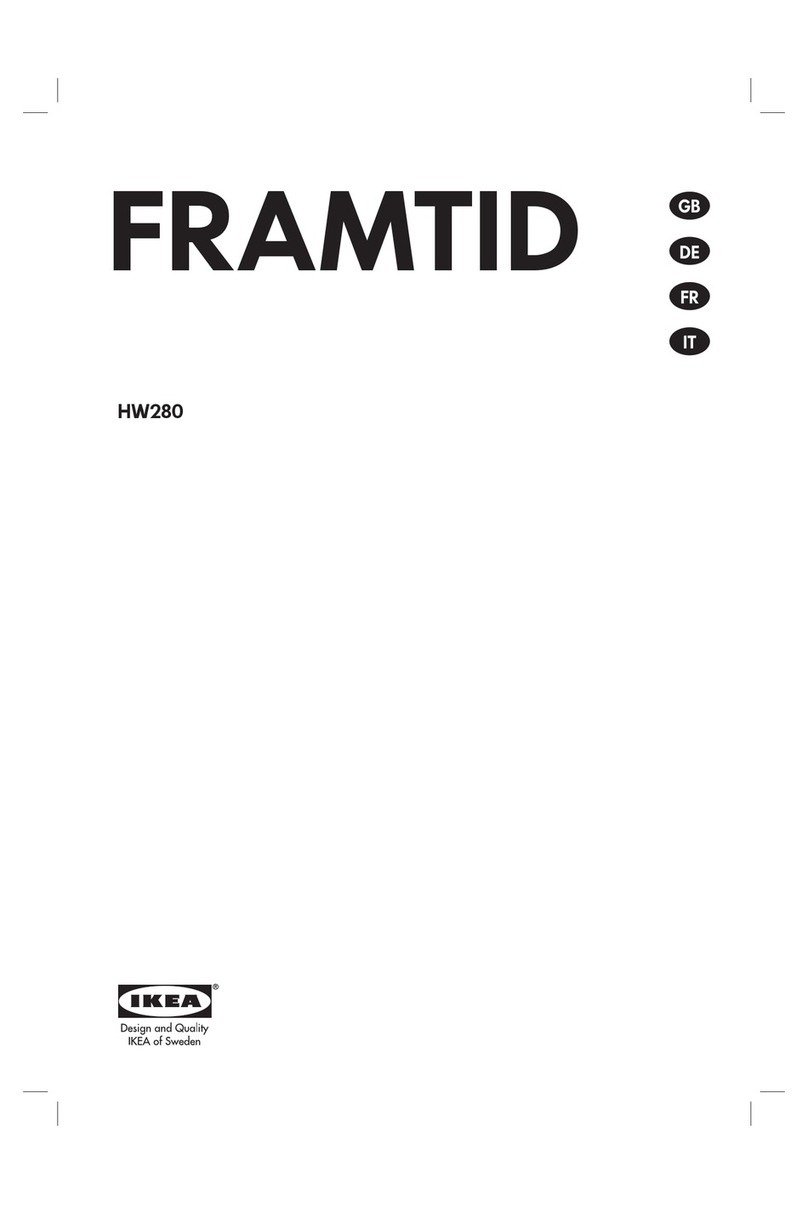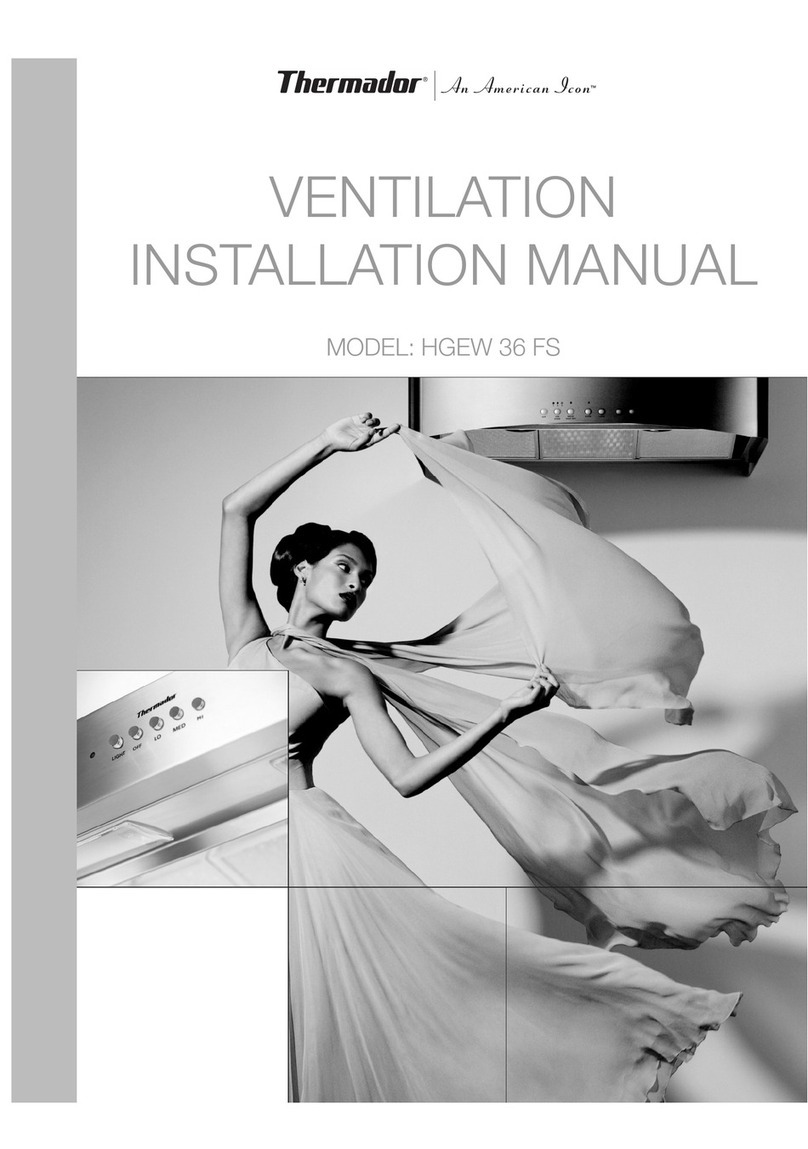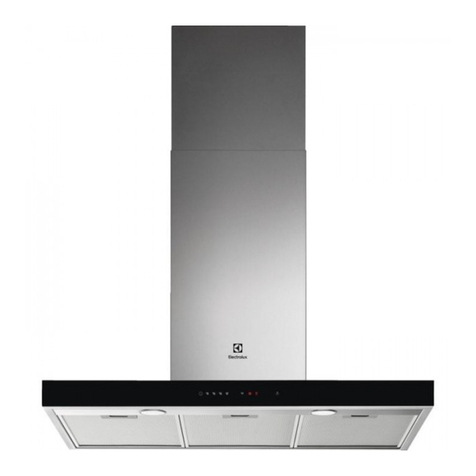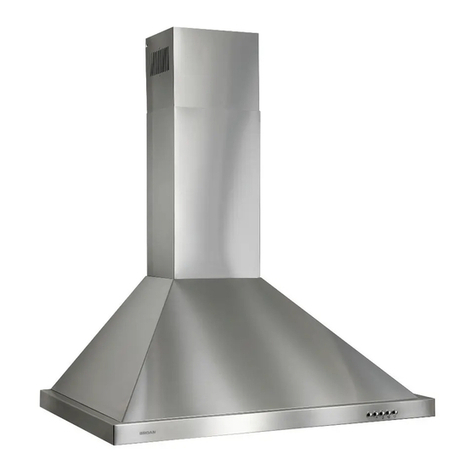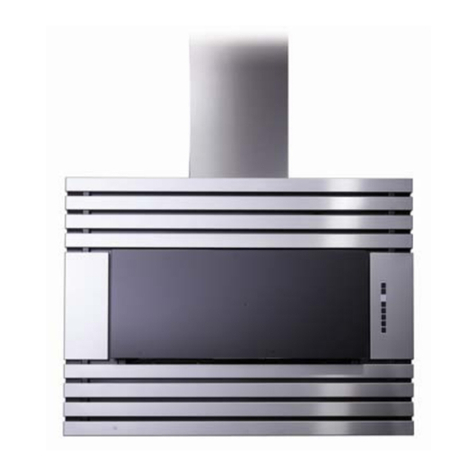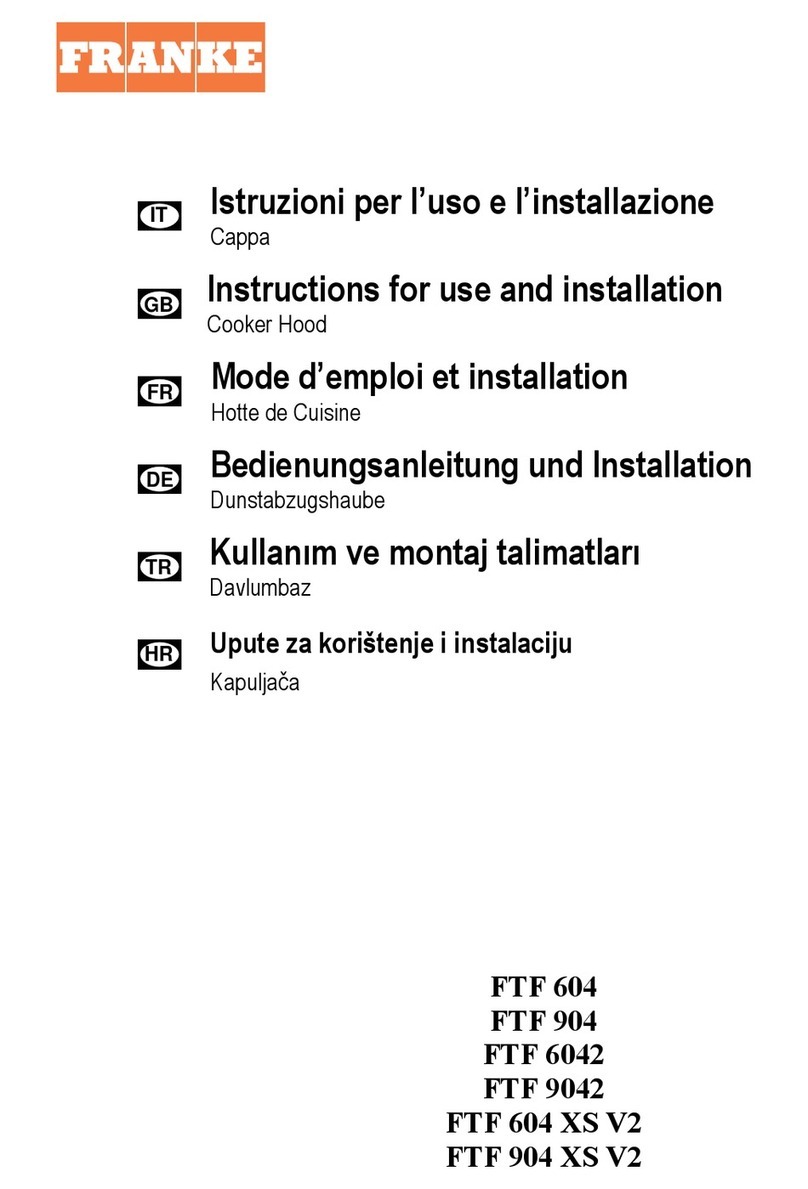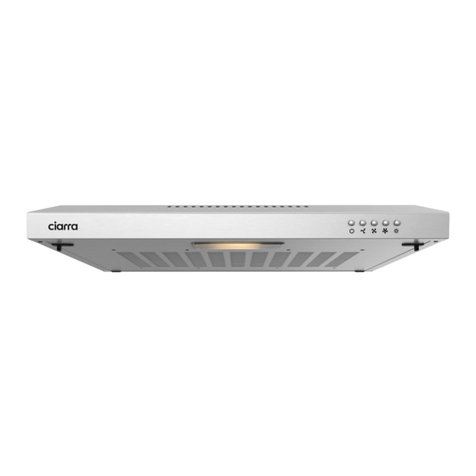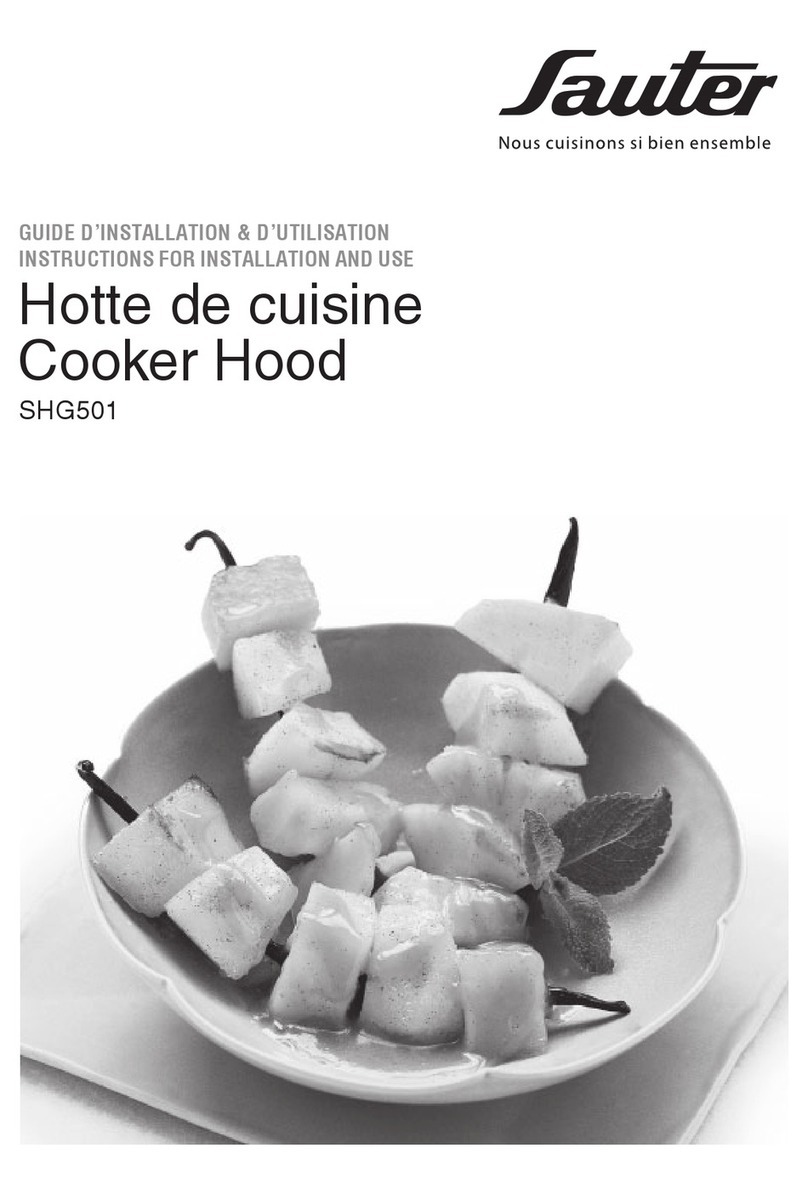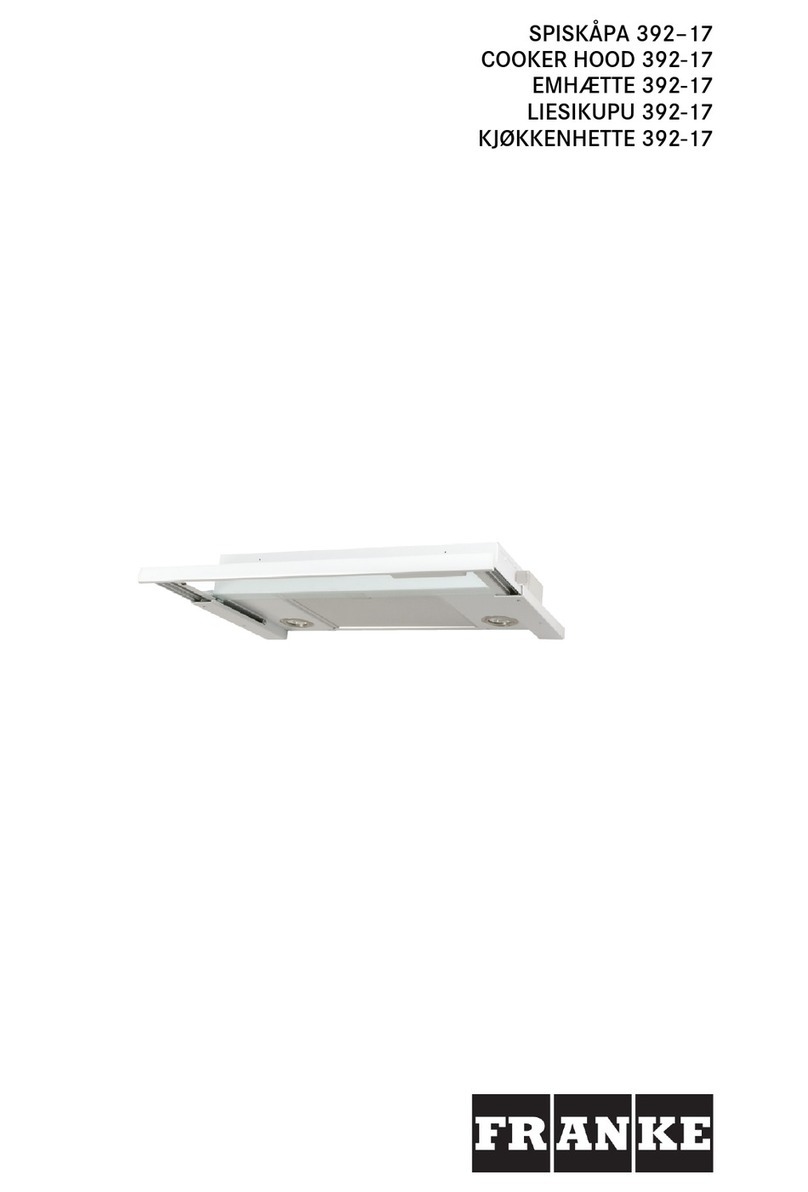
2
WARNING
When wood is burned slowly, it produces tar and
other organic vapors, which when combined with
expelled moisture form creosote. The creosote
vapors condense in the relatively cool chimney ue
of a slow-burning re. As a result, creosote residue
accumulates on the ue lining. When ignited this
creosote makes an extremely hot re. ...A creosote
deposit just 1/8’’ (3 mm) thick is enough to cause
a chimney re.
COAL:
Some coals contain large quantities of sulfur (up to
7%). When coal is burned, sulfur and coal ashes
are deposited in the chimney ue. This deposit
combines with moisture to form a highly corro-
sive acid (sulphuric acid). In order to protect your
chimney, we recommend that you:
1. Burn only low sulfur coals (less than 1% sul-
fur).
2. Have your chimney cleaned within 48 hours
of shutting down your stove at the end of the
heating season. Be certain that all the soot is
removed. Wipe the chimney ue using a strong
solution of baking soda and water. This can
be done by wrapping a rag around a chimney
cleaning brush, dipping it into the baking
soda-water solution then passing it through the
chimney three of four times.
CREOSOTE FORMATION AND NEED FOR REMOVAL
RECOMMENDATIONS
Clearance
The clearances stated in this guide are minimum re-
quirements: if more space is available, use it. Min-
imum clearances mean leaving unobstructed air
space. Do not ll these spaces with any material
whatsoever, especially not insulating material.
Inspection
Contact local building or re ocials about restric-
tions, installation inspections and permits that may
be required in your area.
Replacement Parts
If a component of your chimney system is damaged
it must be replaced by an identical one from Du-
raVent.
NOTE: DIAGRAMS & ILLUSTRATIONS ARE NOT TO SCALE.
WOOD AND COAL STOVES
We recommend:
1. Choose a stove that bears the label of a test-
ing laboratory (such as ULC, CSA, WH, UL, or
ICBO).
2. Choose the right size stove. Do not buy one
larger than you need.
3. Connect only one appliance to a chimney.
4. Never overre your stove. If any part of the
stove or stove pipe is glowing red, then you are
overring. Immediately close the stove’s damp-
ers until the system cools. The high temperature
caused by overring can permanently damage
the stove and stove pipe and may overheat
nearby combustible walls and furniture.
5. Install the stove and stove pipe as described in
the installation instructions accompanying the
stove. Be certain to maintain the required clear-
ances to combustible construction.
6. Keep your ue gases between 150°C and
260°C. This will maximize eciency while min-
imizing condensation and creosote formation.
Do not ll your stove with wood and allow it to
smolder for 8 to 10 hours. This condition pro-
duces large amounts of creosote in the chimney.
7. Do not burn sea driftwood or treated wood.
These combustibles are highly corrosive to all
types of stainless steel.
